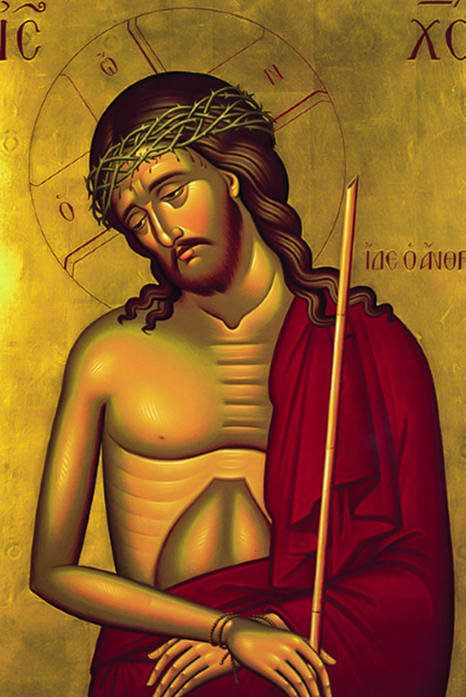Bridegroom Services

During the first three nights of Holy Week we are reminded of the Second Coming of Christ. These are called the Bridegroom services or Nymphios Orthros Services. Why the Bridegroom? "The kingdom of heaven is like a certain king who arranged a marriage for his son, and sent out his servants to call those who were invited to the wedding; and they were not willing to come (...)" (Matt. 22:2-14). Each of these BRIDEGROOM SERVICES has a particular theme. At the first service of Palm Sunday evening, the priest carries the icon of Christ the Bridegroom in procession. We behold Christ as the Bridegroom of the Church, bearing the marks of His suffering, yet preparing a marriage Feast for us in God's Kingdom. On Holy Monday, the Blessed Joseph, the son of Jacob the Patriarch, is commemorated. Joseph is often seen as a Type of Christ. On Holy Tuesday, the Parable of the Ten Virgins is read. Each evening service is the Matins or Orthros Service of the following day (as each day liturgically begins at sunset). All three days share a common theme and a common imagery: the theme of vigilance, and the image of a wedding feast. The lesson of vigilance is that we need to be ready for the wedding day - to be spiritually prepared for Christ’s coming. The Church here on earth is the Bride and Christ is the Bridegroom. The relationship between a bridegroom and his bride is similar to the relationship between Christ and His Church. The two honour and glorify one another, and the two are joined and become one. In the Bridegroom Services, we sing: "Behold, the Bridegroom comes in the middle of the night, (...)." We are reminded that we must be ever ready as we do not know when the time will come when we will be called to join with Him in eternal life.
Offices de l'Époux
Les trois premiers jours de la Semaine Sainte, nous célébrons les offices de l’Époux qui nous invitent à la vigilance: tout notre être est invité à entrer dans une attitude d'attention et d'éveil dans l'attente de la venue pascale. Le Christ est symbolisé comme l'Époux qui vient dans la nuit illuminer notre âme et l'exhorter à recevoir le Royaume. Les offices de l’Époux découlent de la parabole des dix Vierges, qui demande que l'on se prépare pour le Second Avènement du Christ, car « le voleur vient au milieu de la nuit » (Mt 26,1-13). Le soir du dimanche des Rameaux - premier OFFICE DE L'ÉPOUX - le prêtre porte l’icône du Christ Époux en procession. Comme l'Époux de l'Église, le Christ porte les marques de Ses souffrances, tout en nous préparant un festin de mariage dans le Royaume de Dieu. Les offices des Matines célébrés les soirs du dimanche des Rameaux, du Lundi Saint et du Mardi Saint anticipent les événements du jour suivant et partagent un même thème, et l'hymne commune reprise ces trois soirs: « Voici, l'Époux vient au milieu de la nuit ... » résume le thème principal de ces offices. Un autre grand thème fait allusion au repas céleste auquel nous sommes tous conviés, à la condition de revêtir notre âme d'un habit convenable : « Je vois, mon Sauveur, ta chambre nuptiale toute garnie et je n'ai pas d'habit pour y entrer ... » Le Synaxaire de l’Église rappelle que le Lundi Saint nous commémorons le juste Joseph, patriarche de l’Ancien Testament (Gen. 37-50) - vendu par ses frères en Égypte et prototype du Christ souffrant - et le Mardi Saint, nous nous rappelons du figuier desséché (Mt 21:19) qui symbolise l'âme dépourvue des fruits spirituels: repentir sincère, foi, prière et bonnes actions. L’histoire est considérée comme une figuration du jour du Jugement.